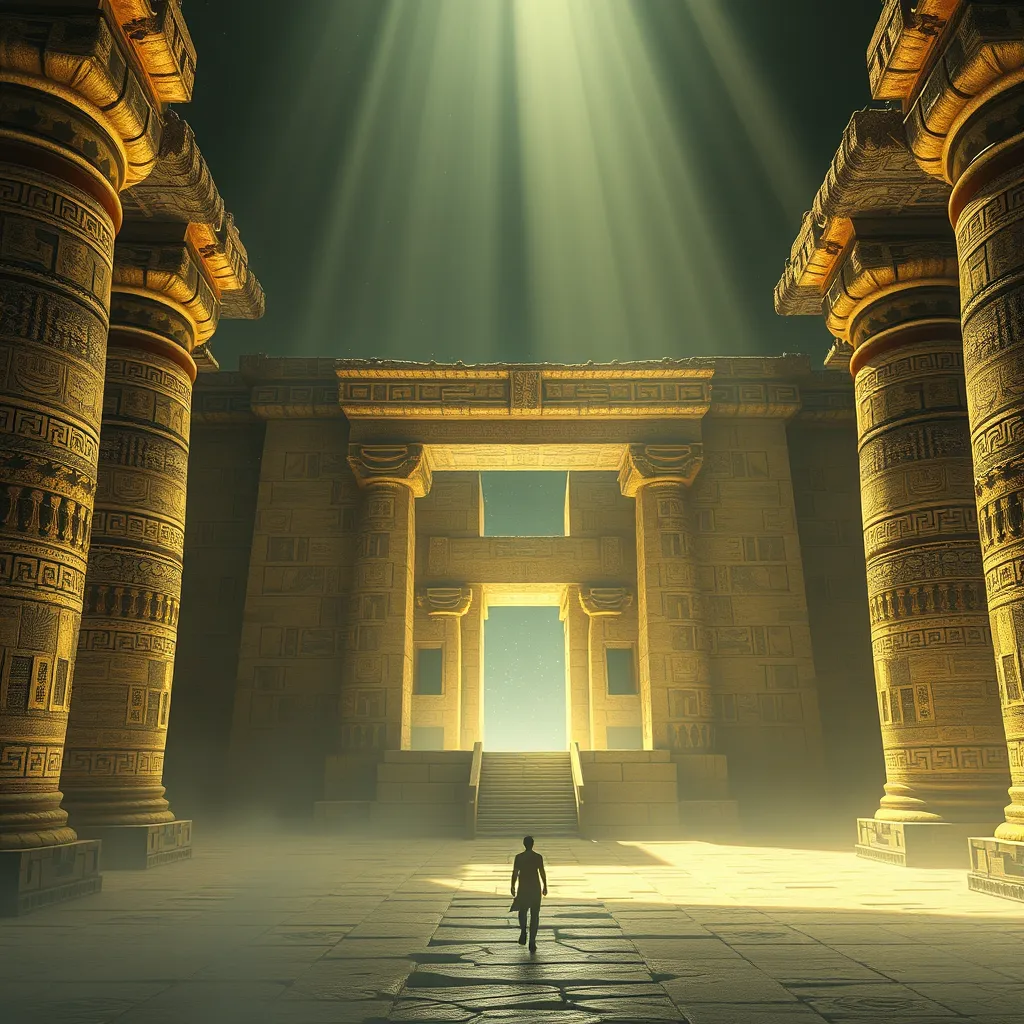The Duat: A Realm of Eternal Light and Shadows
I. Introduction to the Duat
The Duat, often referred to as the Egyptian underworld, is a complex and multifaceted realm that holds great significance in ancient Egyptian belief systems. It is more than just a place of the dead; it embodies the duality of existence, represented by the interplay between light and shadow. In this mystical domain, the souls of the deceased navigate through various challenges and encounters, ultimately seeking judgment and the promise of rebirth.
II. Historical Context of the Duat
The concept of the Duat evolved significantly over time, mirroring the changes in Egyptian society and religion from the Early Dynastic period to the Roman era. Initially, the Duat was a vague notion of an afterlife, but as time progressed, it became a richly detailed landscape described in texts and inscriptions.
- Early Dynastic Period: The Duat was primarily viewed as a shadowy realm where the dead existed.
- Middle Kingdom: The journey through the Duat became more structured, with emphasis on the trials faced by the deceased.
- New Kingdom: The Book of the Dead and other funerary texts elaborated on the Duat’s geography and the various gods that resided there.
- Roman Period: The Duat continued to be a significant aspect of Egyptian spirituality, reflecting syncretism with other cultures.
III. The Structure of the Duat
The Duat is often depicted as a vast and intricate landscape with various regions, each serving a unique purpose in the journey of the deceased. The structure is not uniform, as it comprises multiple layers and realms.
- Regions:
- The Field of Reeds: A paradise where the righteous enjoy eternal peace.
- The Hall of Ma’at: The location of judgment where the heart of the deceased is weighed against the feather of Ma’at.
- The Lake of Fire: A place of punishment for the wicked.
The journey of the deceased through the Duat is fraught with challenges, including encounters with serpents, dangerous waters, and various deities. Each stage is a test of worthiness and a step towards achieving eternal life.
IV. Deities and Entities of the Duat
The Duat is populated by numerous gods, goddesses, and supernatural beings, each with specific roles and attributes. The most notable deities include:
- Osiris: The god of the afterlife, who presides over the judgment of souls.
- Anubis: The jackal-headed god who guides souls through the Duat and oversees mummification.
- Isis: The goddess of magic and motherhood, who plays a crucial role in the resurrection of Osiris.
In addition to gods, various spirits and mythical creatures inhabit the Duat, serving as both guardians and challenges to those who journey through it.
V. Symbolism of Light and Shadow
The duality of light and shadow within the Duat carries profound symbolism in ancient Egyptian thought. Light is often associated with:
- Life: Representing the vitality and energy of the sun.
- Rebirth: The promise of renewal and the cyclical nature of existence.
- Divine Presence: The illumination of the gods, guiding souls towards the afterlife.
Conversely, shadows symbolize:
- Obstacles: The fears and challenges that souls must confront.
- The Unknown: The uncertainties and mysteries of the afterlife.
- Judgment: The darker aspects of one’s soul that must be reconciled for a successful passage.
VI. The Duat in Funerary Practices
Funerary practices in ancient Egypt were intricately linked to the Duat, as they prepared the deceased for their journey into the afterlife. Rituals included:
- Mummification: Preserving the body to ensure it could house the soul in the Duat.
- Funerary Rites: Ceremonies performed to honor the deceased and guide them on their journey.
- Burial Goods: Items placed in tombs to assist the deceased in the afterlife.
Tombs were designed not only as resting places but as gateways to the Duat, adorned with inscriptions and artifacts aimed at ensuring safe passage.
VII. The Duat in Art and Literature
The Duat has been vividly depicted in ancient Egyptian art, showcasing the beliefs and values surrounding this mystical realm. Common themes in art include:
- Journey Scenes: Illustrations of the deceased navigating through the Duat’s challenges.
- Judgment Scenes: Artistic representations of the heart being weighed against the feather of Ma’at.
Literature, particularly the Book of the Dead, contains numerous references to the Duat, detailing the experiences and trials that the deceased would face.
VIII. The Legacy of the Duat in Modern Culture
The Duat continues to influence contemporary interpretations of the afterlife, appearing in various forms of media and literature. Its legacy is reflected in:
- Modern Literature: Many authors draw inspiration from the Duat to explore themes of death and the afterlife.
- Film and Television: The realm is often portrayed in adaptations of Egyptian mythology, bringing ancient beliefs to new audiences.
- Art and Culture: The imagery and concepts associated with the Duat resonate in modern artistic expressions.
In this way, the Duat remains a potent symbol of the human quest for understanding life, death, and the mysteries that lie beyond.




